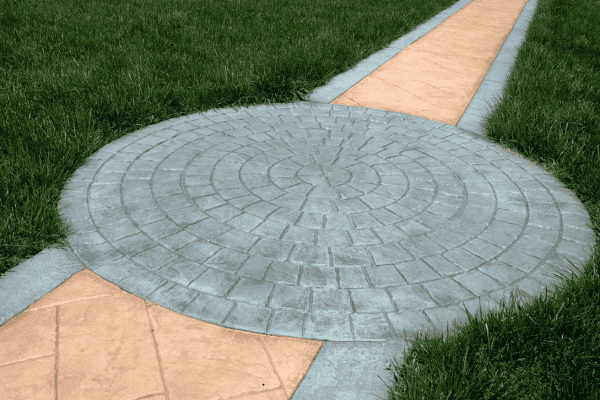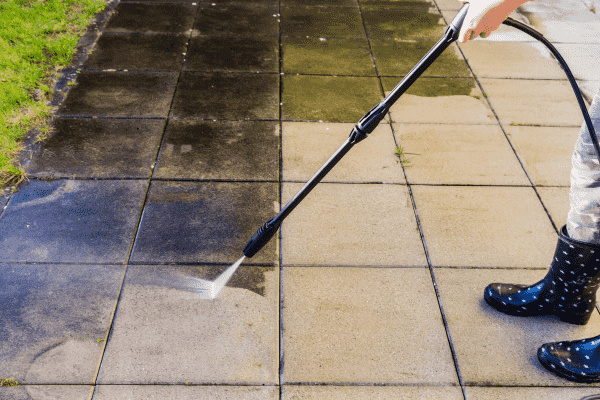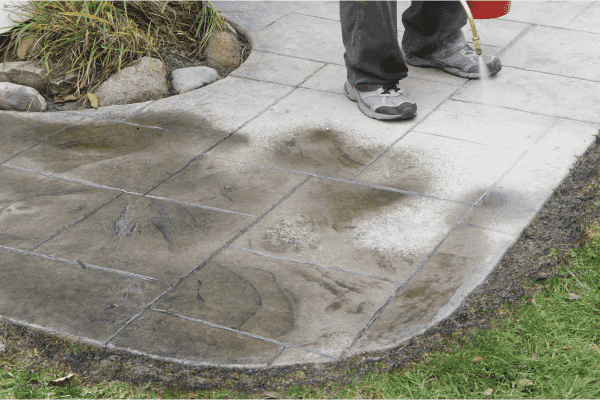Maintain Your Stamped Concrete
Stamped concrete surfaces offer a beautiful and durable solution for patios, driveways, walkways, and pool decks. With their versatile designs and impressive durability, these surfaces can mimic the look of natural stone, brick, or even wood, providing a high-end finish at a fraction of the cost.
However, to keep your stamped concrete looking its best, regular maintenance is essential. Concrete contractors plays an important role in designing the best stamping. This article will provide detailed tips on maintaining your stamped concrete surfaces, ensuring they remain stunning and long-lasting.

Understanding Stamped Concrete
Before diving into maintenance tips, it’s important to understand what stamped concrete is. Stamped concrete is poured concrete that is patterned and/or textured to resemble brick, slate, flagstone, stone, tile, wood, and various other patterns and textures.
This process is often used for patios, sidewalks, driveways, pool decks, interior flooring and concrete stamping for home. The durability and aesthetic appeal of stamped concrete make it a popular choice for many homeowners.
Regular Cleaning
Sweep and Wash Regularly
After getting concrete stamping service, one of the simplest yet most effective ways to maintain your stamped concrete surface is through regular cleaning. Dirt, debris, and grime can accumulate on the surface, dulling its appearance over time.
Sweeping: Use a broom to sweep the surface regularly, removing leaves, dirt, and other debris.\
Washing: Periodically wash the surface with a garden hose or a pressure washer on a low setting. Be careful with high-pressure settings, as they can damage the surface. A mild detergent mixed with water can help remove stubborn stains.

Avoid Harsh Chemicals
When cleaning your stamped concrete, avoid using harsh chemicals or abrasive cleaners, as they can damage the sealant and the concrete itself. Stick to mild, pH-balanced cleaners designed for concrete surfaces.
Sealing Your Stamped Concrete

Apply Sealant Regularly
Sealing your stamped concrete is crucial to protect it from the elements and maintain its appearance. A good sealant will enhance the color, add a sheen, and protect against stains and surface wear.
Frequency: Generally, stamped concrete should be resealed every 2-3 years. However, the exact frequency depends on the usage and exposure to weather elements.
Type of Sealant: Choose a high-quality acrylic or polyurethane sealant. These sealants offer excellent protection and can be found in both water-based and solvent-based formulas. Water-based sealants are environmentally friendly and have a lower odor, while solvent-based sealants are more durable.
Proper Application of Sealant
Preparation: Before applying a new coat of sealant, clean the surface thoroughly and let it dry completely. Remove any existing sealant if necessary.
Application: Use a roller or a sprayer to apply the sealant evenly. Apply thin, even coats to avoid puddling. Multiple thin coats are better than one thick coat.
Drying Time: Allow adequate drying time between coats and after the final coat. Follow the manufacturer’s instructions for the best results.
Addressing Stains and Spills
Quick Response to Spills
To prevent stains from setting into the concrete, it’s important to address spills immediately. Whether it’s oil, grease, or food, prompt cleaning can prevent long-term damage.
Blot the Spill: Use a clean cloth or paper towel to blot the spill, avoiding rubbing it into the surface.
Clean with Mild Detergent: Wash the area with a mild detergent and water, then rinse thoroughly.
Dealing with Stubborn Stains
For more stubborn stains, you may need to use a specialized concrete cleaner. Always test a small, inconspicuous area first to ensure the cleaner does not damage the surface.
Protecting the Surface
Avoid Heavy Loads
While stamped concrete is durable, it’s still susceptible to cracking under excessive weight.
Furniture: Use furniture pads under the legs of heavy furniture to distribute the weight evenly and prevent indentations or cracks.
Vehicles: Avoid driving heavy vehicles or equipment over stamped concrete driveways or paths that are not designed to handle such loads.

Use Mats and Rugs
In high-traffic areas or places prone to spills, use mats or rugs to protect the surface. This is especially important in areas like pool decks, where water and pool chemicals can be harsh on the concrete.
Weather Protection
Guard Against Freeze-Thaw Cycles
In regions with freezing temperatures, the freeze-thaw cycle can cause significant damage to concrete surfaces.
Seal Cracks Promptly: Inspect your stamped concrete for cracks and seal them immediately to prevent water from seeping in and freezing.
Use Ice Melt Products Cautiously: Avoid using de-icing salts, which can damage the concrete. Opt for products labeled as safe for use on concrete.
Shade and Shelter
Protect your stamped concrete from excessive sun exposure by using awnings, umbrellas, or shade structures. Prolonged exposure to UV rays can cause the color to fade over time.
Long-Term Care
Professional Maintenance
While regular DIY maintenance is essential, consider hiring a professional every few years for a thorough inspection and maintenance service. Professionals can address issues that may not be visible to the untrained eye and apply commercial-grade sealants for added protection.
Addressing Structural Issues
If you notice significant cracks, shifting, or other structural issues with your stamped concrete, it’s best to consult a professional. These issues could indicate underlying problems that need expert attention.
Seasonal Maintenance Tips
Summer Maintenance
Inspect for Damage: The warm, dry weather is a good time to inspect for any cracks or chips that need repair.
Reseal if Necessary: Summer is an ideal time for resealing, as the warm weather helps the sealant to cure properly.
Winter Maintenance
Clear Snow Carefully: Use a plastic shovel instead of a metal one to clear snow, avoiding damage to the surface.
Avoid Salt: As mentioned, avoid using salt or de-icers that can harm the concrete.
Frequently Asked Questions
You should reseal your stamped concrete every 2-3 years, depending on wear and exposure to weather conditions, to maintain its protective layer and vibrant appearance.
Yes, but use a low-pressure setting to avoid damaging the surface or the sealant. Regular washing helps maintain the appearance of your stamped concrete.
Conclusion
Maintaining your stamped concrete surfaces involves regular cleaning, timely sealing, immediate attention to spills, and protection from excessive loads and harsh weather conditions. By following these tips, you can ensure that your stamped concrete remains beautiful and durable for years to come. Regular maintenance not only enhances the appearance of your surfaces but also extends their lifespan, providing a solid return on your investment.







